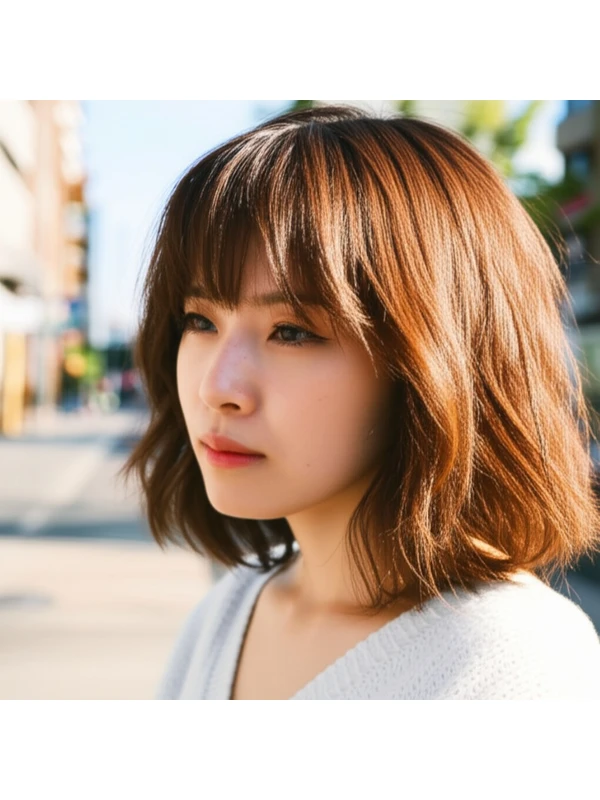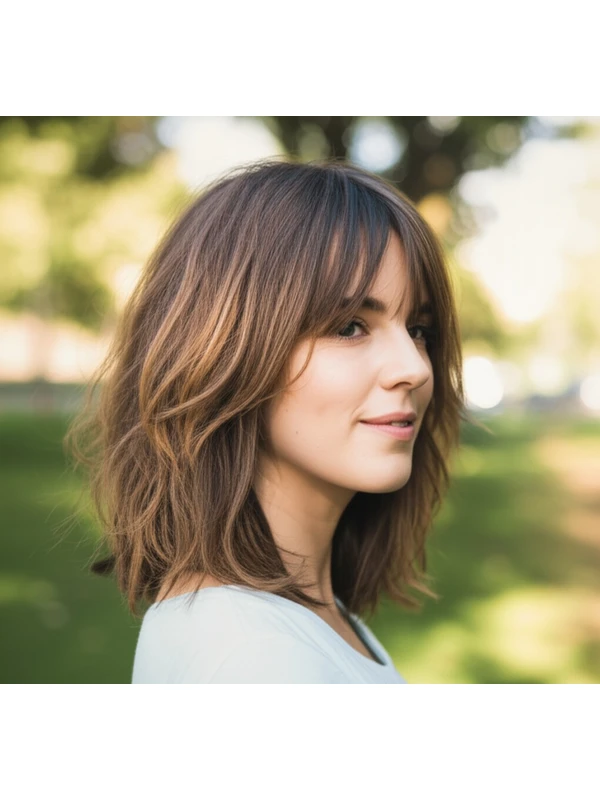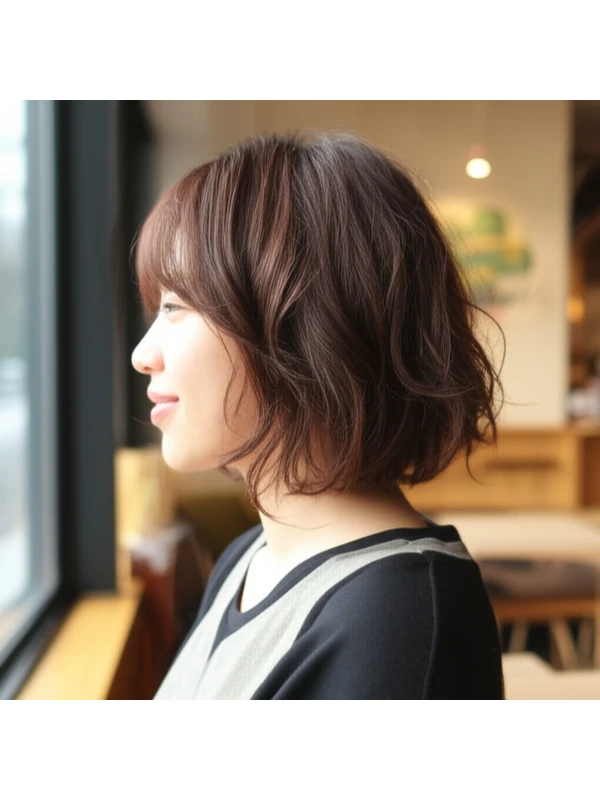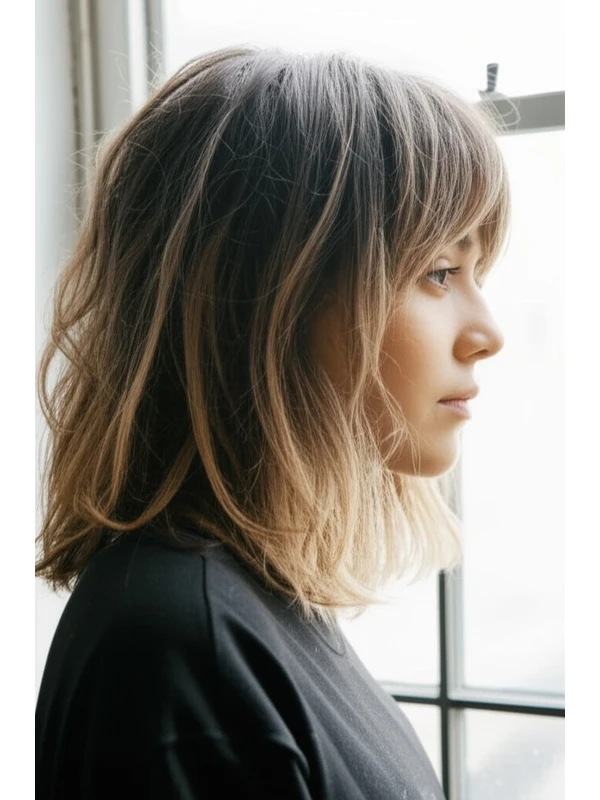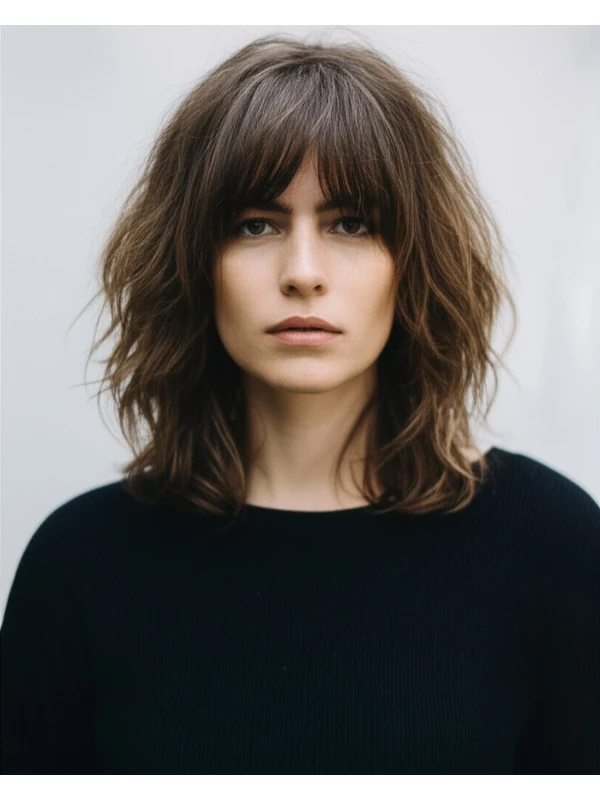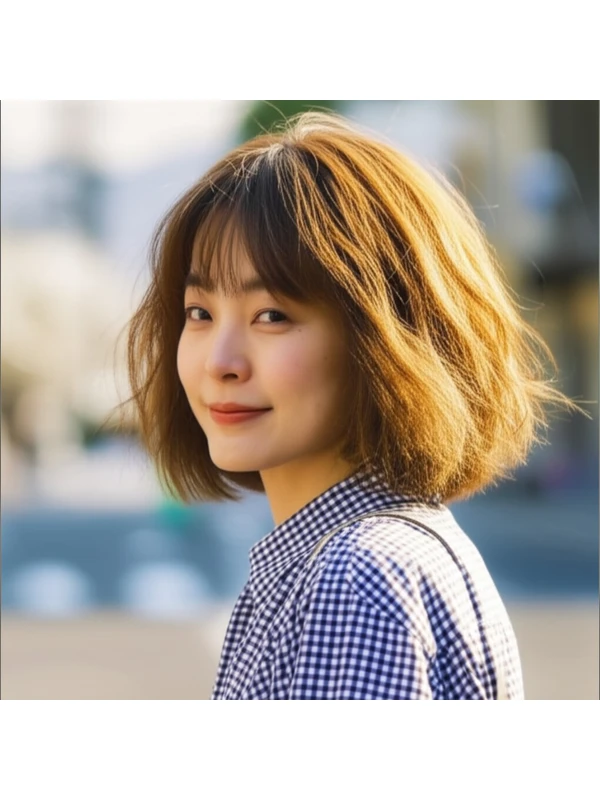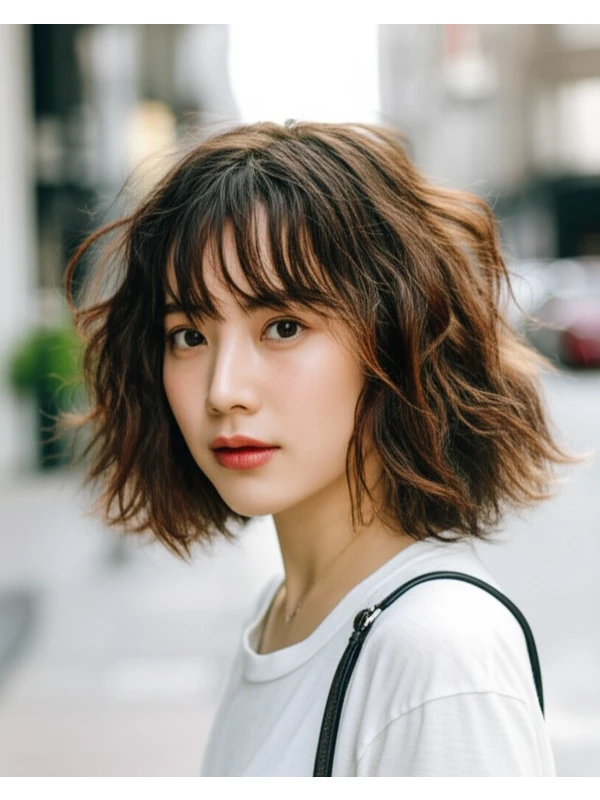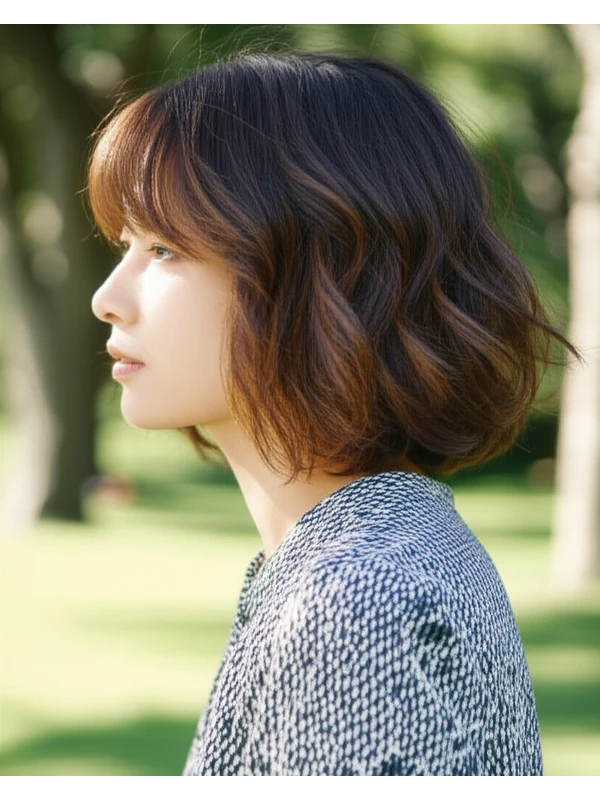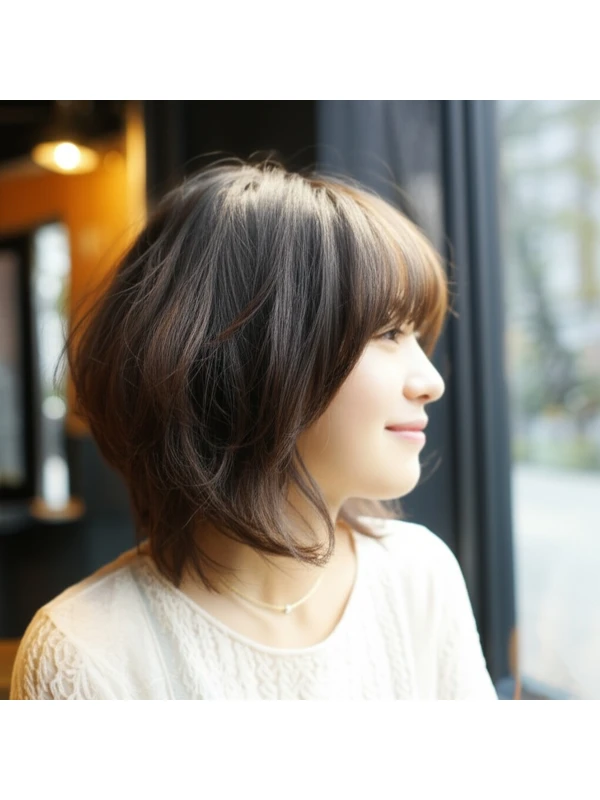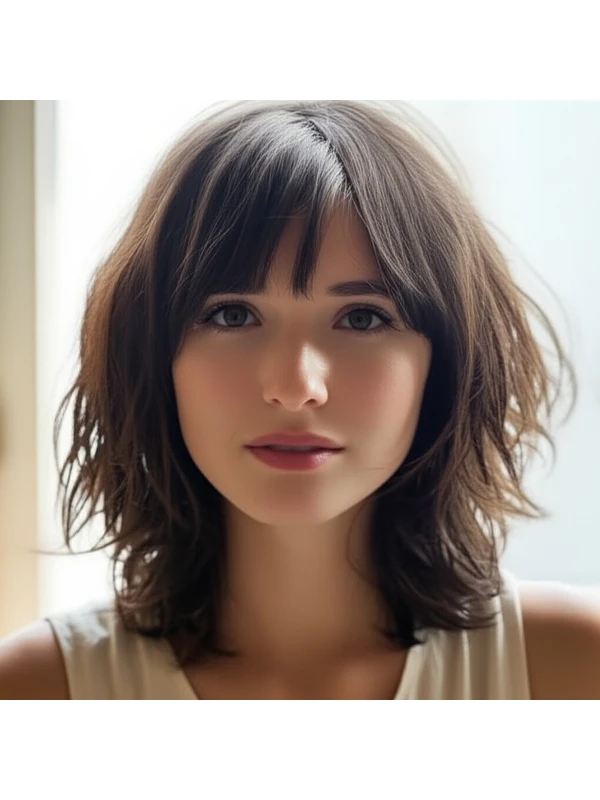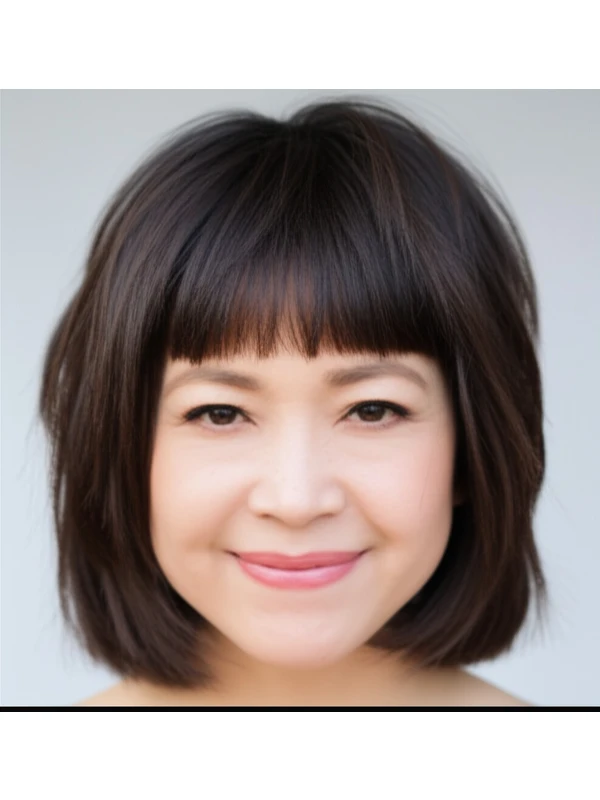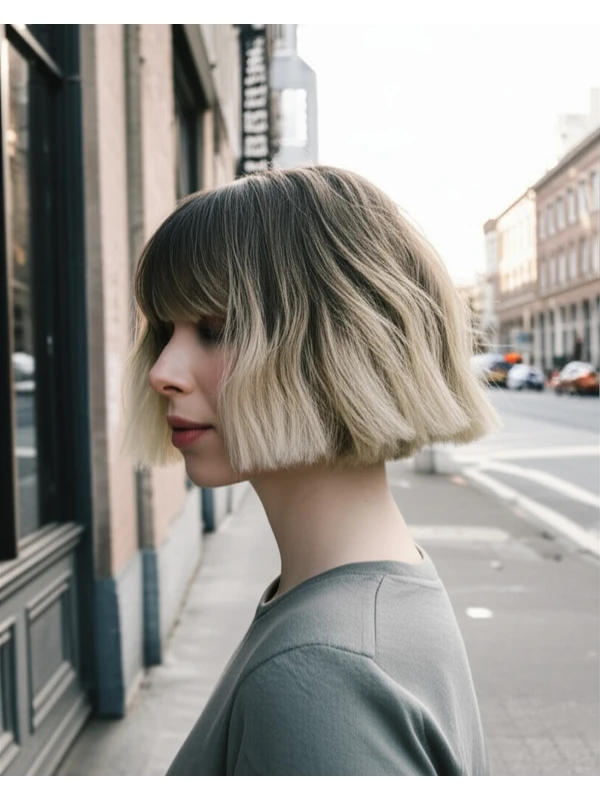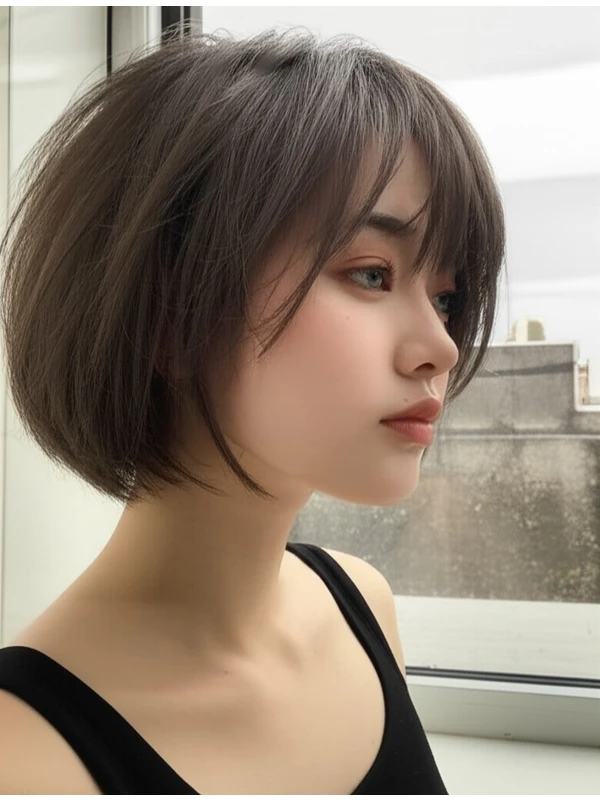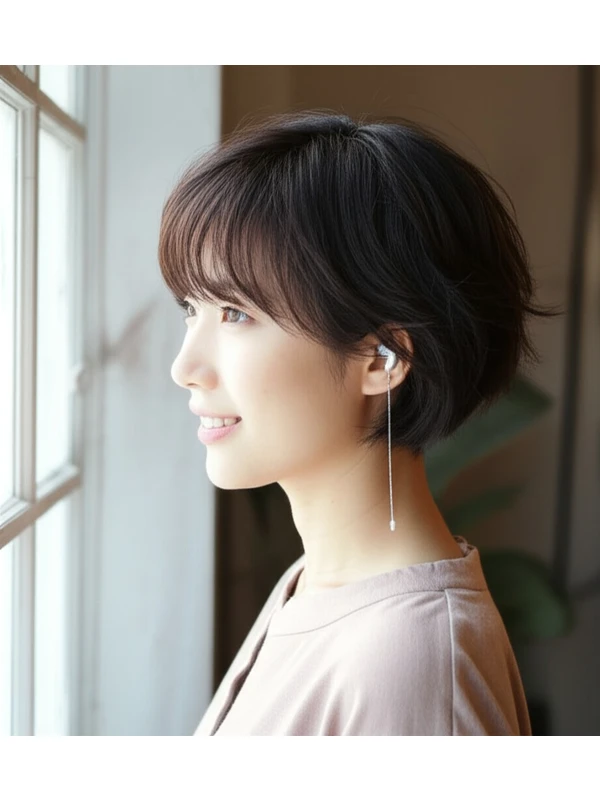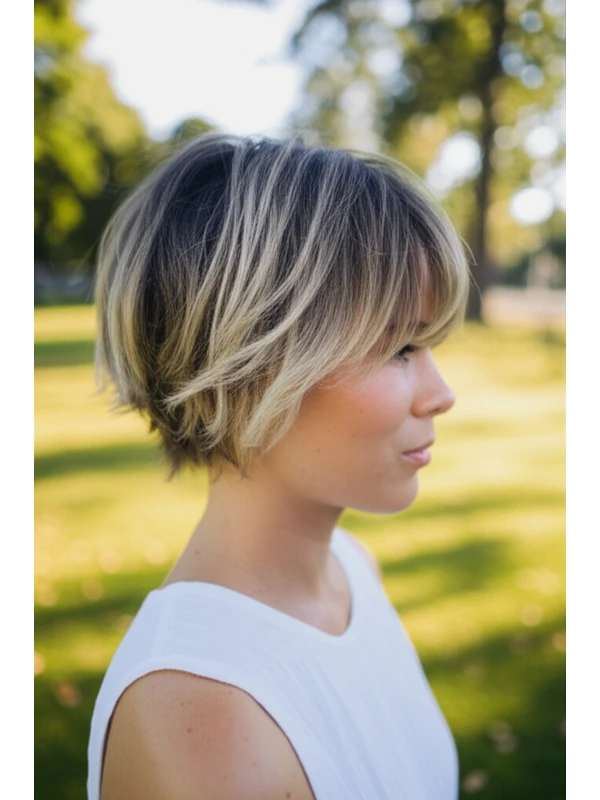#Layered Bangs: A Guide to Framing Your Face
Layered bangs are a classic for a reason – they’re flattering on so many face shapes and hair types! But navigating the world of fringe can feel overwhelming. This guide breaks down everything you need to know about layered bangs, from what they really look like to how to style them perfectly. Let's dive in!
#1) Background & Definition: What Are Layered Bangs?
Layered bangs aren’t just one thing; it’s a family of styles. They differ from blunt bangs (a straight, even line across the forehead) by incorporating layers and movement. Think soft, blended pieces that frame your face rather than a solid wall of hair.
- Cut Geometry: The key is graduation – shorter layers at the hairline blending into longer ones towards the rest of the hair. This creates softness and avoids a harsh look.
- Key Features: Movement, texture, framing around the eyes and cheekbones.
- Typical Length Ranges: Layered bangs can range from brow-grazing (just skimming your eyebrows) to cheekbone-length (hitting mid-cheek), or even longer, blending into the side layers of your hair.
- Alternative Names: Soft bangs, feathered bangs, textured fringe, face-framing bangs.
#2) Face Shape Fit: Finding Your Perfect Fringe
The beauty of layered bangs is their adaptability! Here's how they work with different face shapes:
- Oval: Lucky you! Almost any length and density of layered bangs will look fantastic on an oval face. Experiment!
- Fringe Options: Cheekbone-length for a playful vibe, brow-grazing for a classic feel.
- Round: Layered bangs can help soften roundness by creating angles. Avoid blunt, heavy bangs that accentuate width.
- Fringe Options: Side-swept or angled layered bangs are your best bet. Longer lengths (cheekbone-length and below) work well to elongate the face.
- Square: Soften a strong jawline with wispy, textured layers. Avoid harsh, straight lines.
- Fringe Options: Softly feathered, brow-grazing or slightly longer bangs that blend seamlessly into side layers are ideal.
- Heart: Layered bangs can balance the wider forehead of a heart-shaped face.
- Fringe Options: Side-swept or softly layered bangs work best. Avoid very short, blunt styles that draw attention to the forehead’s width.
- Diamond: Layered bangs soften the angles and highlight your eyes.
- Fringe Options: Cheekbone-length or longer, softly feathered layers are flattering. A slight side part adds asymmetry and balance.
- Oblong (Long): Layered bangs can add width to a long face.
- Fringe Options: Bangs that hit at the cheekbones or slightly below will help shorten the appearance of your face. Avoid very wispy, short bangs which might emphasize length further.
#3) Body Proportions & Height Guidance: Balancing Your Silhouette
Layered bangs aren’t just about your face; they impact your overall look!
- Petite: Shorter, cheekbone-length bangs can avoid overwhelming a smaller frame.
- Average Height: Most lengths work well – consider what best complements your facial features.
- Tall: Longer, brow-grazing or side-swept bangs can soften the vertical lines of your face and body.
- Narrow Shoulders: Layered bangs add visual width to the upper body.
- Broad Shoulders: Avoid very voluminous bangs that might further emphasize shoulder width; softer, more blended layers are best.
- Short Neck: Longer bangs (cheekbone-length or longer) can help elongate the neck visually.
- Long Neck: Shorter, face-framing bangs can create a sense of balance and reduce the appearance of length.
#4) Works Best With Hair Types & Densities: Finding Your Bang Match
Layered bangs are versatile but require some consideration based on your hair type.
- Straight Hair: Layered bangs look sharp and defined, allowing for sleek or textured styling.
- Wavy Hair: The layers add movement and enhance the natural wave pattern. Be mindful of potential frizz – a good serum is key!
- Curly/Coily Hair: Layered bangs can be gorgeous but require careful cutting to avoid bulkiness and ensure even distribution. Shrinkage is crucial to consider (see below).
- Fine Hair: Layered bangs add the illusion of fullness, but too many layers can make hair look sparse.
- Medium/Thick Hair: Layered bangs work beautifully – you have more volume to play with!
- Density Tips: For fine hair, ask your stylist for minimal layering. With thick hair, strategic thinning is essential to avoid heaviness.
- Shrinkage (Curls & Coils): Remember that curly and coily hair shrinks as it dries. A stylist experienced in cutting textured hair will account for this – communicate your desired length after shrinkage!
#5) Styling Variations: From Casual to Evening Glam
Layered bangs are adaptable depending on the occasion.
- Sleek vs. Textured: Sleek bangs require a flat iron and smoothing serum. Textured bangs embrace natural movement with minimal heat styling.
- Middle vs. Side Part: A middle part creates symmetry, while a side part adds softness and asymmetry.
- Fringe Variations: Curtain bangs (longer, parted in the center) are trendy; wispy bangs offer a more delicate look.
- Occasion Styling:
- Casual: Air-dried with a texturizing spray.
- Office: Sleek and polished with a flat iron.
- Evening: Styled up or to the side, showcasing the face and layered bangs.
#6) Maintenance: Keeping Your Bangs Looking Fresh
Regular trims are key!
- Trim Cadence: Every 4-8 weeks, depending on how quickly your hair grows and how much precision you want to maintain.
- At-Home Routine: Gentle brushing, occasional dry shampoo (for oil control).
- Heat vs. Air Dry: Minimize heat styling for healthier hair. When using heat, always use a protectant spray.
- Product Checklist:
- Shampoo & Conditioner: Suitable for your hair type.
- Leave-in Conditioner: For moisture and detangling.
- Styler (Mousse/Gel/Cream): To define layers and control frizz.
- Finishing Spray: For hold and shine.
- Estimated Daily Styling Time: 5-15 minutes, depending on desired style.
#7) Grow-Out Roadmap: The Evolution of Your Bangs
Layered bangs change as they grow out!
- Months 1-3: The initial shape is most defined. Regular trims are crucial to maintain the layered look.
- Months 4-6: Bangs start blending into side layers, creating a softer overall appearance. You can adjust length and styling to suit your preferences.
- Maintaining Shape: Between cuts, use dry shampoo to prevent oiliness at the roots and style with gentle techniques to avoid damage.
#8) Color Pairings: Enhancing Your Bangs
Color can really elevate layered bangs!
- Shades that Elevate: Face-framing highlights or lowlights create dimension within the bangs.
- Cool Undertones: Ashy blondes, cool browns complement cooler skin tones.
- Warm Undertones: Honey blondes, golden browns enhance warmer complexions.
- Low-Commitment Options: Root shadowing (subtle color blending at the roots) can add depth without a full color change.
#9) Season & Occasion Guide: Styling for Every Moment
- Spring/Summer: Lighter styling products to avoid heaviness; embrace natural texture.
- Fall/Winter: More moisturizing products and potentially more heat styling for added definition.
- Work: Sleek, polished look with minimal distractions.
- Weddings: Soft, romantic waves or a classic updo showcasing the bangs.
- Parties: Playful and textured styles that reflect your personality.
#10) Cost & Time: What to Expect at the Salon
- Salon Time: 30-60 minutes (depending on complexity).
- Price Range: Generally, layered bang trims fall in a moderate price bracket – slightly less than a full haircut but more than a simple trim.
#11) Pros & Cons: Weighing Your Options
Pros: Versatile, flattering for many face shapes, adds dimension and movement to the hair. Cons: Requires regular maintenance (trims), can be tricky to style if you're not used to layering, potential for frizz with wavy/curly hair.
#12) Salon Consultation Script: Questions to Ask & Discuss
Here are some prompts to help guide your conversation with your stylist:
- "I’m interested in layered bangs. Can we discuss what length and style would best suit my face shape?"
- "How much layering do you recommend based on my hair density?"
- "Can you show me examples of different layered bang styles that might work for me?"
- “What products will I need to maintain the style at home?”
- “How often should I come in for trims?”
FAQs: Your Bangs Questions Answered
- Are layered bangs difficult to style? Not necessarily! With a few simple techniques and the right products, they can be easy to manage.
- Can I get layered bangs if my hair is very short (like a bob)? Yes, but the length will need to be long enough to create layers – typically chin-length or longer.
- What if I hate them? Can I just brush them out? It takes time for bangs to grow out completely. Frequent trims can help speed up the process.
- Will layered bangs make my hair look thinner? If cut incorrectly, yes. A skilled stylist will consider your density and layer appropriately.
- Can I style my bangs upwards or backwards? Generally, yes! The layers allow for versatility in styling.
- Are there any specific products you recommend for curly/coily hair with layered bangs? Yes! Look for moisturizing leave-in conditioners, curl creams, and edge control to define the layers and minimize frizz.
